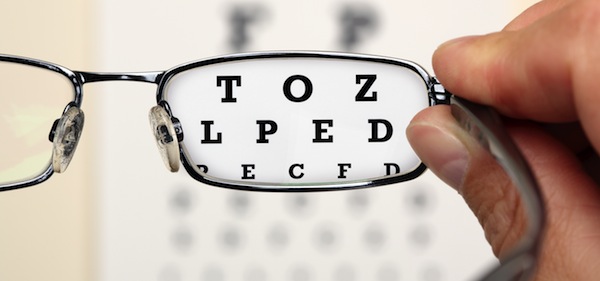Why should you have an eye test?
From the age of 40, it is normal to experience changes in your vision. At this time, the risks of developing certain eye conditions are much higher. It can be difficult for you to know whether you have begun to develop an eye problem that can lead to permanent vision loss, especially if left untreated. So, the best way to maintain good eye health is to have your eyes tested regularly.
Eye conditions to be aware of if you’re over 40 include:
Presbyopia – is the most common age-related vision condition, causing gradual loss of the ability to change the shape of the lens of your eye and focus at normal reading distance. It is usually treated with prescription glasses.
Cataract – a common condition defined as the clouding of the lens and the gradual loss of vision. Treatment for cataracts involves surgery to replace your lens with one made of plastic.
Age-related macular degeneration (AMD) – involves the loss of core vision needed to read, drive and recognise faces. Your risk of developing AMD is higher if it runs in your family. While you can’t change your genes or your age, there are some precautions you can take to reduce your risk.
Glaucoma – arises from increased pressure in the eyeball, which can cause progressive damage to the optic nerve cells, leading to loss of peripheral vision. It is common for sufferers not to realise they have glaucoma until irreparable damage has been done. Therefore it must be treated early.
Diabetic retinopathy – if you have diabetes, it can impact your vision by affecting the blood vessels behind your eye, leading to serious vision loss. The treatment relies on early detection and laser treatment.
How often should you have an eye test?
Vision Australia recommends that Australians without eye diseases or specific risk factors should have their eyes examinedby a registered optometrist or ophthalmologist every two years.
For people with known sight conditions, it is easy to think that there is nothing that can be done to help their failing vision. However, yearly eye tests can detect and treat any further conditions you could develop, helping you maintain your quality of life.
Some warning signs of eye conditions include:
- spots or floaters in your vision
- warped or distorted vison
- sharp eye pain, redness or discomfort
- double vision
- diminished colour vision
- loss of central vision
- loss of vision at edges
- inability to adjust to light changes
This website can help you locate an eye care practitioner near you.
How can you keep your eyes healthy?
Weakening vision is a natural part of ageing, but it is possible to maintain your vision with good eye health.
To find out what you can do to keep your eyes healthy, read our article on how to ‘Reduce your risk of vision loss‘.
You can also try this quick and fun eye test from home.

